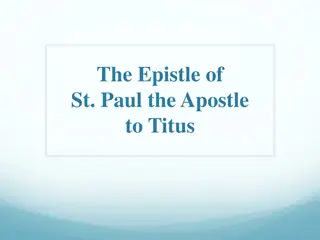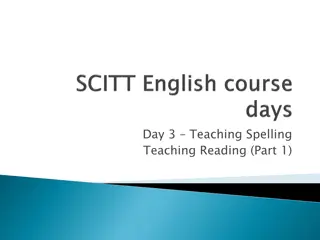Enhancing Online Spelling Correction for Query Completion: A Study by Huizhong Duan and Bo-June (Paul) Hsu
This study delves into improving online spelling correction for query completion, focusing on common misspellings, keyboard adjacency errors, and ambiguous word breaking issues. It aims to assist users in expressing their information needs accurately while reducing input effort. The research addresses deficiencies in existing search engines and proposes a model to enhance error detection and correction efficiency. Various data sources and methods are explored to refine the correction process, ultimately aiming to enhance user search experiences.
Download Presentation

Please find below an Image/Link to download the presentation.
The content on the website is provided AS IS for your information and personal use only. It may not be sold, licensed, or shared on other websites without obtaining consent from the author. Download presentation by click this link. If you encounter any issues during the download, it is possible that the publisher has removed the file from their server.
E N D
Presentation Transcript
Online Spelling Correction for Query Completion Huizhong Duan, UIUC Bo-June (Paul) Hsu, Microsoft WWW 2011 March 31, 2011 Microsoft Research
Background Query misspellings are common (>10%) Typing quickly exxit mis[s]pell Keyboard adjacency imporyant Ambiguous word breaking silver_light Inconsistent rules concieve conceirge New words kinnect Microsoft Research 2
Spelling Correction Goal: Help users formulate their intent Offline: After entering query Online: While entering query Inform users of potential errors Help express information needs Reduce effort to input query Microsoft Research 3
Motivation Existing search engines offer limited online spelling correction Offline Spelling Correction (see paper) Model: (Weighted) edit distance Data: Query similarity, click log, Auto Completion with Error Tolerance (Chaudhuri & Kaushik, 09) Poor model for phonetic and transposition errors Fuzzy search over trie with pre-specified max edit distance Linear lookup time not sufficient for interactive use Goal: Improve error model & Reduce correction time Microsoft Research 4
Outline Introduction Model Search Evaluation Conclusion Microsoft Research 5
Offline Spelling Correction facebook 0.01 kinect faecbok facebook kinnect kinect Query Correction Pairs Query Histogram 0.005 a 0.4 Transformation Model ? ?? ?? Query Prior A* Trie ?(?) Training ec ec 0.1 nn n $ b c 0.4 0.2 0.2 $ c $ 0.2 0.2 0.1 0.2 Decoding $ c 0.1 0.1 $ 0.1 A* Search arg max ? Query ? elefnat Correction ? elephant ? ? ? ?(?) Microsoft Research 6
Online Spelling Correction facebook 0.01 kinect faecbok facebook kinnect kinect Query Correction Pairs Query Histogram 0.005 a 0.4 Transformation Model ? ?? ?? Query Prior A* Trie ?(?) Training ae ea 0.1 nn n $ b c 0.4 0.2 0.2 $ c $ 0.2 0.2 0.1 0.2 Decoding $ c 0.1 0.1 $ 0.1 A* Search arg max ?, ?:?= ? ? ? ? ?(?) Partial Query ? elefn Completion ? elephant Microsoft Research 7
Transformation Model: ?(?? ??) e l e f n a t e l e p h a n t Training pairs: ? ? Align & segment Decompose overall transformation probability using Chain Rule and Markov assumption Estimate substring transformation probs ?(?? ??|context) ? elefnat elephant = ? el el ? e e|el el ? f ph|e e ? an na|f ph ? t t|an na Microsoft Research 8
Transformation Model: ?(?? ??) Joint-sequence modeling (Bisani & Ney, 08) Expectation Maximization E-step M-step ? ? ? ?? ?? Pruning Smoothing Learn common error patterns from spelling correction pairs without segmentation labels Adjust correction likelihood by interpolating model with identity transformation model Microsoft Research 9
Query Prior: ?(?) Estimate from empirical query frequency Add future score for A* search a a 0.4 Query Prob $ $ b b c c a 0.4 0.4 0.4 0.2 0.2 Query Log ab 0.2 ac 0.2 $ $ c c $ $ 0.2 0.2 0.1 0.2 0.2 abc 0.1 abcc 0.1 $ $ c c 0.1 0.1 0.1 $ $ 0.1 0.1 Microsoft Research 10
Outline Introduction Model Search Evaluation Conclusion Microsoft Research 11
A* Search: arg max ?, ?:?= ? ? ? ? ?(?) Input Query: acb a a 0.4 Current Path ? QueryPos: ac|b History: a a, c b Prob: Future: max p(ab ) = 0.2 $ $ b b c c b TrieNode: 0.4 0.4 0.2 0.2 0.2 $ $ c c $ $ p(a a) p(c b|a a) 0.2 0.2 0.1 0.1 0.2 $ $ c c Expansion Path ? QueryPos: acb| History: ?.History, b c Prob: ?.Prob p(b c|c b) Future: max p(abc ) = 0.1 0.2 0.1 0.1 c TrieNode: 0.1 $ $ 0.1 0.1 Microsoft Research 12
Outline Introduction Model Search Evaluation Conclusion Microsoft Research 13
Data Sets Training Transformation Model ?(? ?) Search engine recourse links Correctly Spelled Misspelled Total Unique 101,640 (70%) 44,226 (30%) 145,866 Total 1,126,524 (80%) 283,854 (20%) 1,410,378 Training Query Prior ?(?) Top 20M weighted unique queries from query log Testing Human labeled queries 1/10 as heldout dev set Correctly Spelled 7585(76%) Misspelled Total Unique 2374(24%) 9959 Microsoft Research 14
Metrics Recall@K #Correct in Top K / #Queries Precision@K (#Correct / #Suggested) in Top K Offline MinKeyStrokes (MKS) # characters + # arrow keys + 1 enter key Online MKS = min( 3 + + 1, 4 + 5 + 1, 5 + 1 + 1) = 7 Penalized MKS (PMKS) MKS + 0.1 # suggested queries Microsoft Research 15
Results All Queries R@10 Misspelled Queries R@1 R@10 0.677* 0.900* 0.579 0.887 R@1 0.918* 0.976 0.899 MKS 11.86* 13.39 MKS 11.96* 14.53 Proposed Edit Dist 0.973 Google N/A N/A 13.01 N/A N/A 13.49 Baseline: Weighted edit distance (Chaudhuri and Kaushik, 09) Outperforms baseline in all metrics (p < 0.05) except R@10 Google Suggest (August 10) Google Suggest saves users 0.4 keystrokes over baseline Proposed system further reduces user keystrokes by 1.1 1.5 keystroke savings for misspelled queries! Microsoft Research 16
Risk Pruning Apply threshold to preserve suggestion relevance Risk = geometric mean of transformation probability per character in input query Prune suggestions with many high risk words All Queries P@1 0.920 0.927 R@1 0.918 0.916 R@10 0.976 0.969 P@10 0.262 0.304 MKS 11.86 11.87 PMKS 19.60 19.42 No Pruning With Pruning Pruning high risk suggestions lowers recall and MKS slightly, but improves precision and PMKS significantly Microsoft Research 17
Beam Pruning Prune search paths to speed up correction Absolute Limit max paths expanded per query position Relative Keep only paths within probability threshold of best path per query position R@1 Time (s) 0.94 32 0.92 16 0.90 8 0.88 4 0.86 2 0.84 1 0.82 0.5 0.80 0.25 -3 -4 -5 -6 -7 -8 log10(relative threshold) Microsoft Research 18
Example Microsoft Research 19
Outline Introduction Model Search Evaluation Conclusion Microsoft Research 20
Summary Modeled transformations using unsupervised joint-sequence model trained from spelling correction pairs Proposed efficient A* search algorithm with modified trie data structure and beam pruning techniques Applied risk pruning to preserve suggestion relevance Defined metrics for evaluating online spelling correction Future Work Explore additional sources of spelling correction pairs Utilize n-gram language model as query prior Extend technique to other applications Microsoft Research 21























